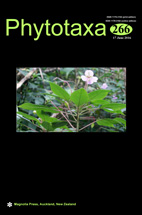Abstract
Microfilamentous unbranched cladophoralean algae are distributed from high latitudes to the tropics in waters of varying salinities. Their simple morphology provides few diagnostic characteristics for distinguishing species, such that the taxonomic status of minute Cladophoraceae remains unclear. In a recent field survey in Japanese mangrove forests and brackish waters, we found Rhizoclonium-like cladophoralean algae (Cladophoraceae spp. 1–3). In molecular phylogenetic analyses based on partial small subunit ribosomal RNA (SSU) and large subunit ribosomal RNA (LSU) genes, these algae clustered with R. africanum Kützing in the LSU tree and were separated from the true Rhizoclonium clade in both the LSU and SSU trees. An early divergence in the Cladophoraceae lineage was also strongly supported in both trees. Cladophoraceae spp. 1–3 and R. africanum shared a specific rhizoidal developmental structure, the “knee-like joint.” Cladophoraceae spp. 1–3 also shared polypyramidal pyrenoids, while typical bilenticular pyrenoids are hardly found. Cladophoraceae sp. 1 is characterized by wider cells and more nuclei per cell than described taxa. Cladophoraceae sp. 3 had a smaller cell length/diameter ratio and fewer nuclei per cell than described taxa. Based on these distinct morphological features, we describe two new species: R. fractum Ichihara et Miyaji sp. nov. and R. umbraticum Ichihara et Miyaji sp. nov. We also revealed that Cladophoraceae sp. 2 should be assigned to the described species R. minutissimum (Zeller) P. C. Silva based on morphological characteristics.

